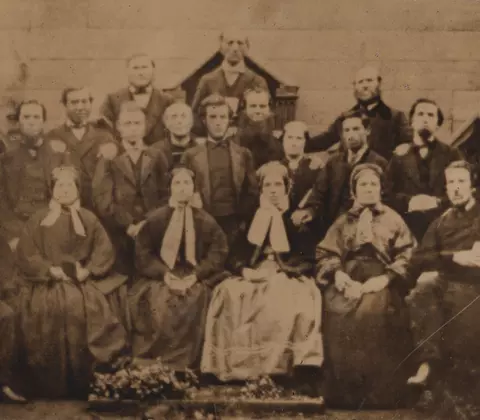
Who are The Salvation Army?
In June 1865 William Booth was invited by the East London Special Services Committee to preach for three weeks at their tent mission on a disused Quaker burial ground off Mile End Road in Whitechapel. William began preaching and became leader of this congregation, soon to become known as the Christian Mission.
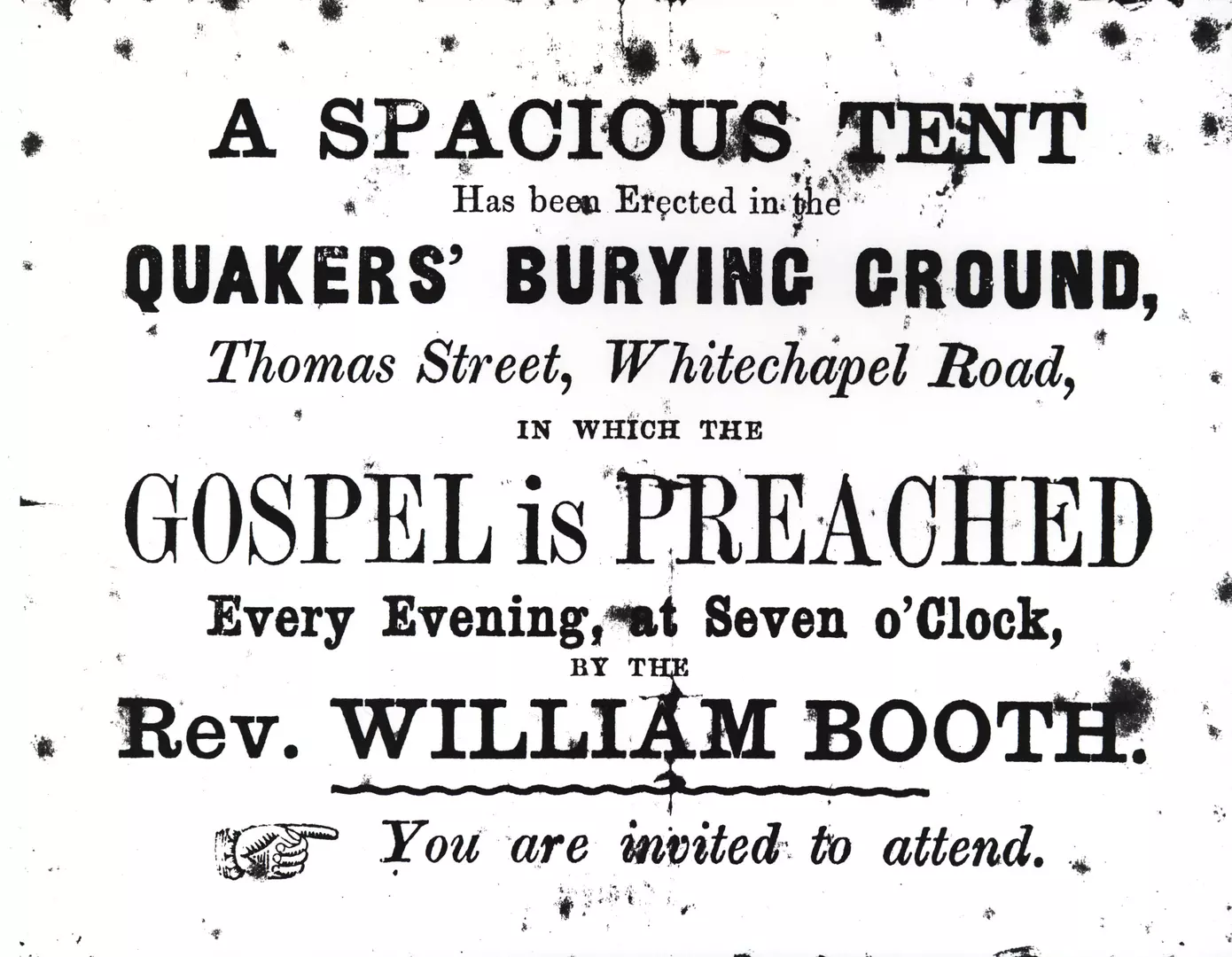
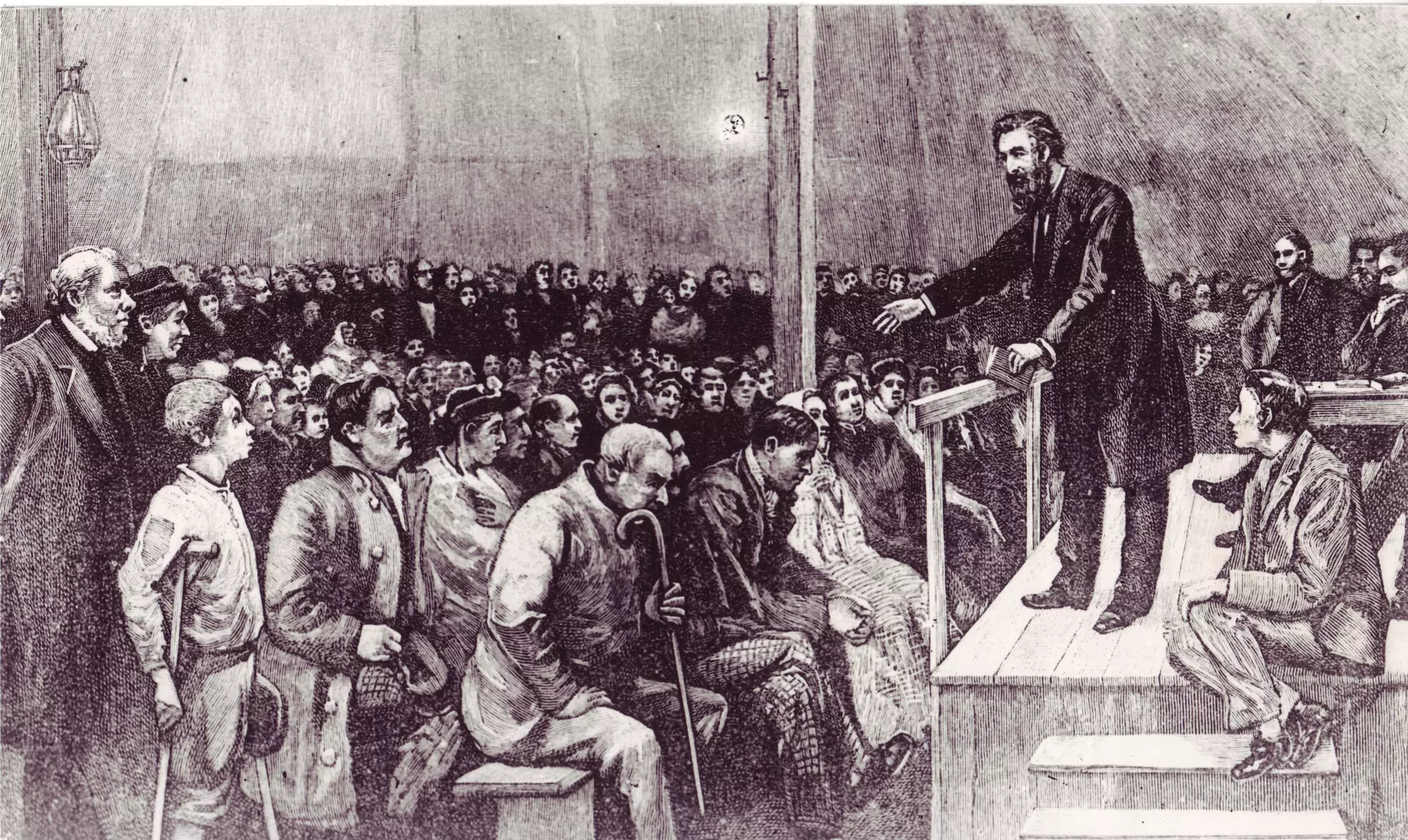
Under Booth’s leadership, ‘mission stations’ were opened along Whitechapel Road to cater for a growing audience. As well as engaging in evangelism, Booth’s new converts began to care for the poor and needy. In 1870 the first permanent meeting hall was established at a covered market in the Whitechapel Road known as the People’s Market. It was renamed the People’s Mission Hall and adapted to include a hall to seat 1500, a tea room, shop and soup kitchen. The spiritual and philanthropic work of the Christian Mission expanded across London and to towns beyond – the beginning of what was to be The Salvation Army.
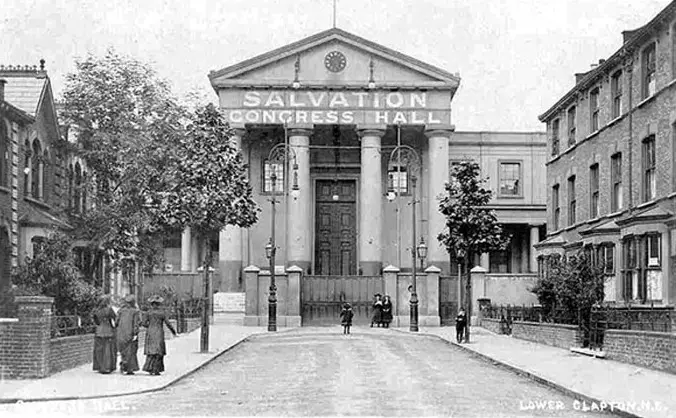
The Salvation Army is an evangelical part of the universal Christian Church. Salvationists make a pledge with God affirming their faith in Jesus. Organised within a quasi-military structure, officers and members wear a uniform. The early Salvation Army adopted several symbols that, along with the uniform, have become instantly recognisable to the general public: a crest, a shield and a flag.
Crest
The Salvation Army has its own crest.
The original design was produced by Captain William Ebdon in 1878 and had appeared on the Salvation Army letterhead by 1879. It is similar to the crest still in use today.
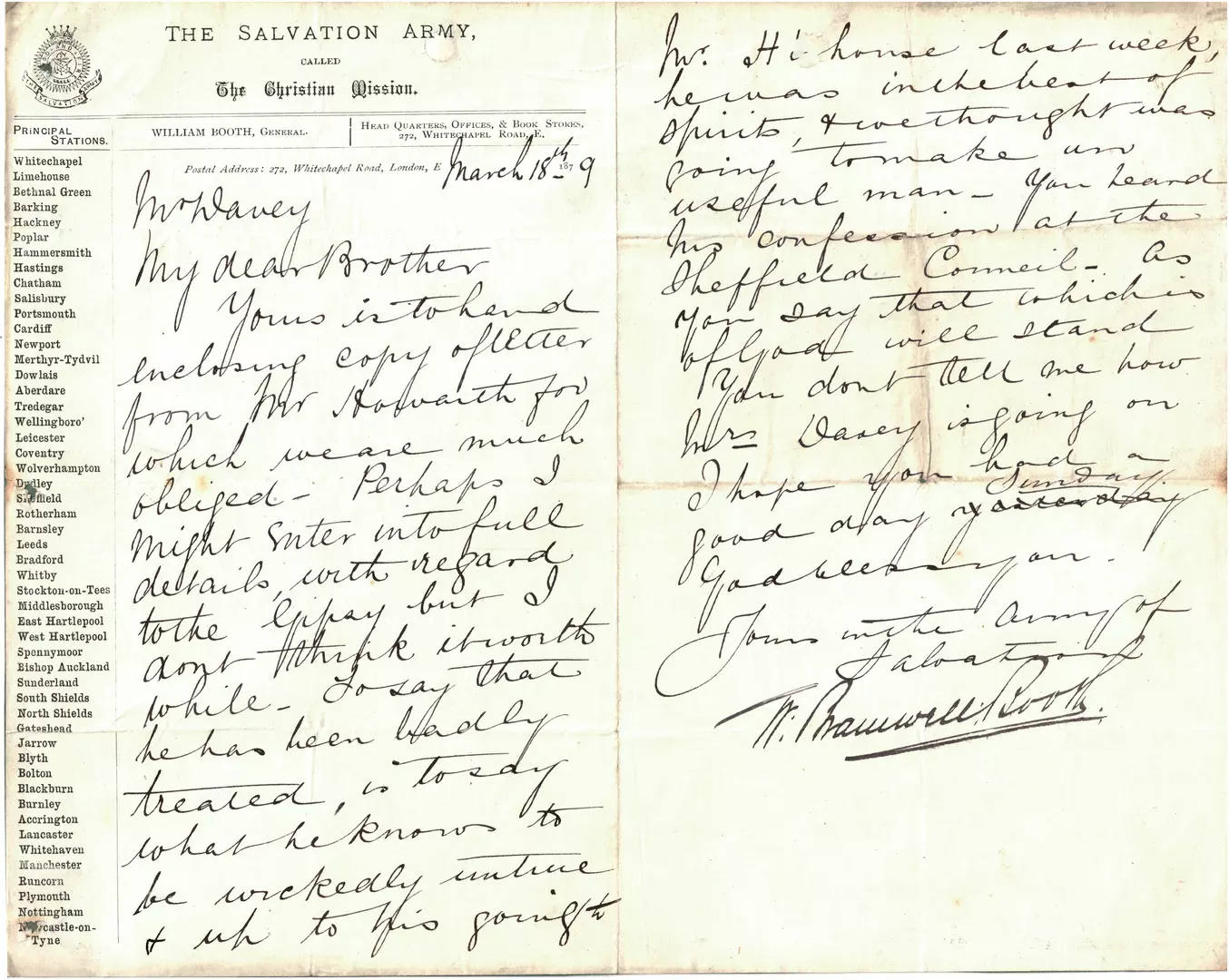
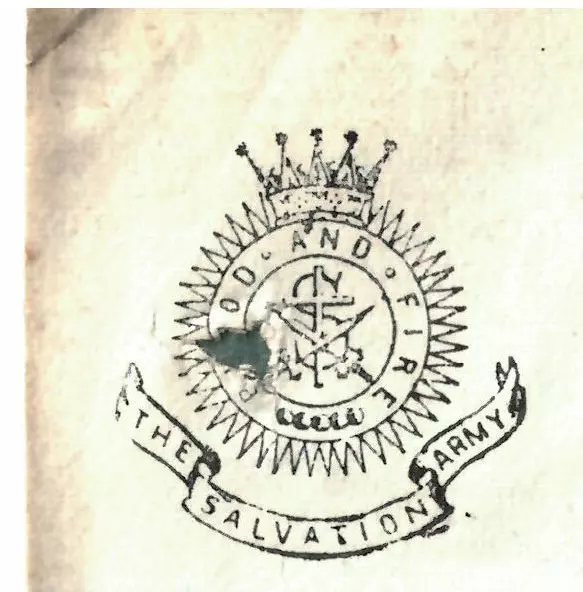
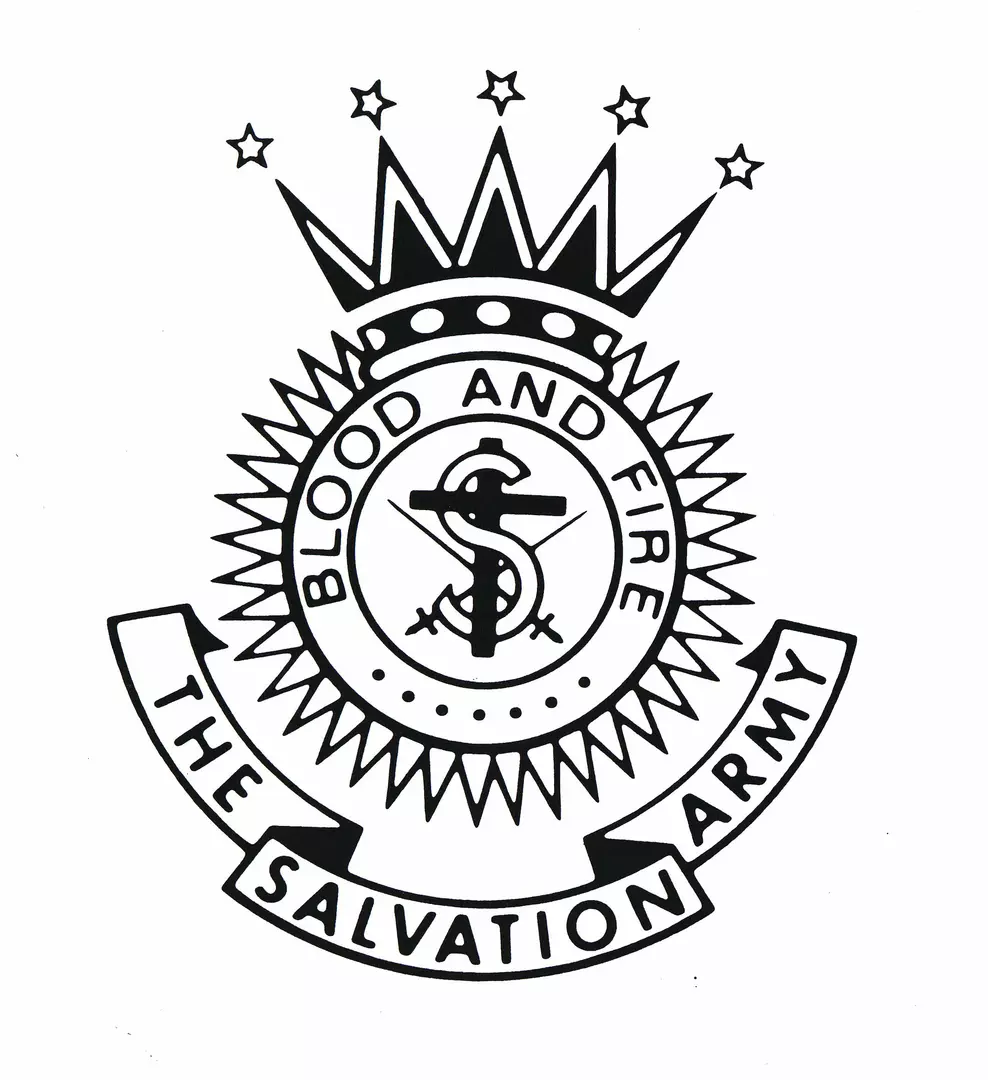
Each part of the crest has a different meaning:
The sun in the centre represents the light and fire of the Holy Spirit.
The letter ‘S’ wrapping around the cross stands for Salvation.
The two swords represent the ‘war of salvation’.
The seven shots at the bottom of the circle represent the truth of the gospel.
The crown at the top of the crest, represents the crown of glory, which Salvationists believe God will give to all his ‘faithful soldiers’.
Flag
From its earliest days, The Salvation Army has used flags.
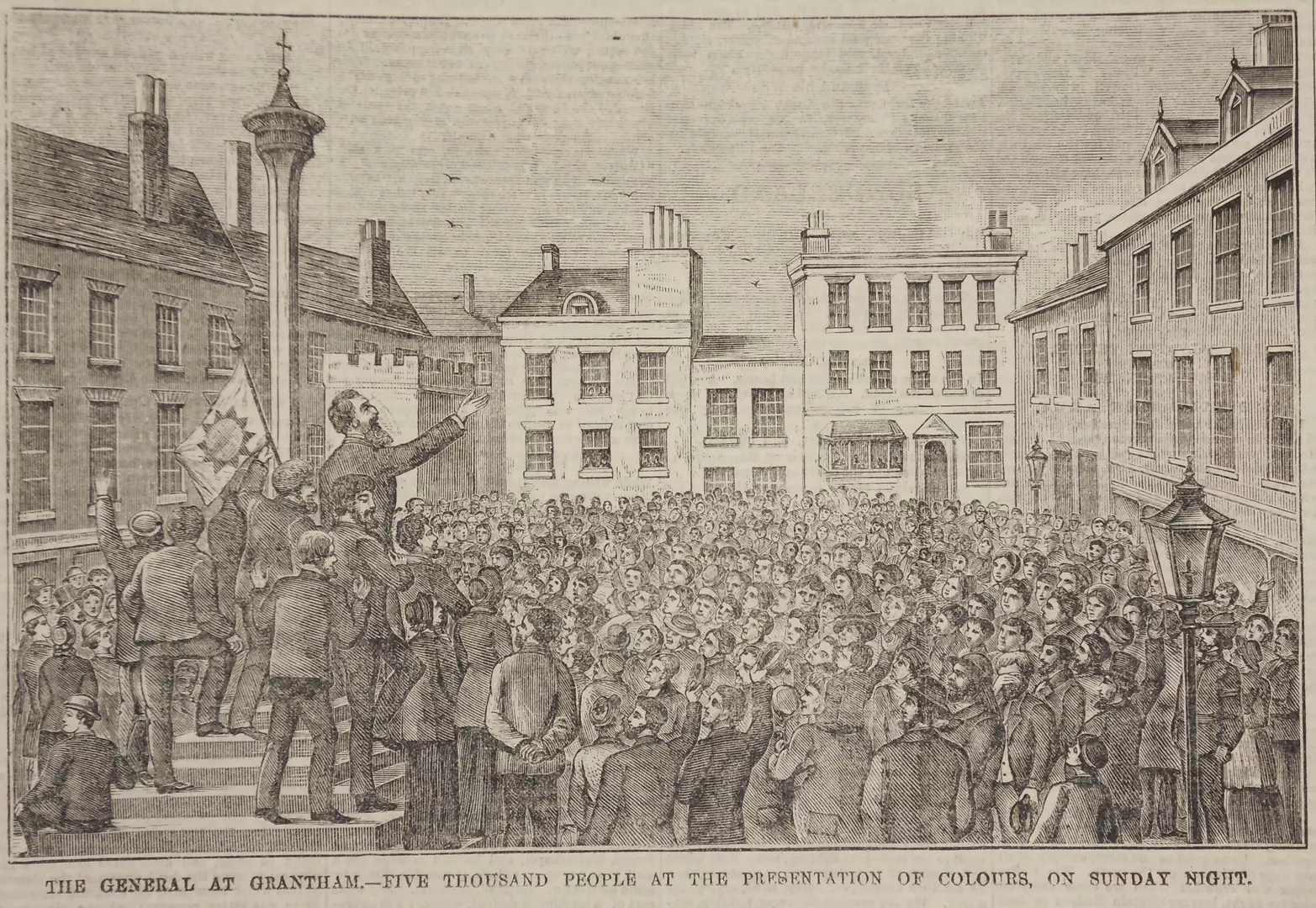
During the 1880s, many local corps were using flags of various kinds in their processions. General Booth saw the need for the movement to have one standard flag design. Early flags had a ‘sun’ in their centre, but since 1882 the standard flag has had a yellow star in its centre. This star represents the Holy Spirit. The present star is also eight-pointed; the number has been varied from time to time but no significance has been attached to this.
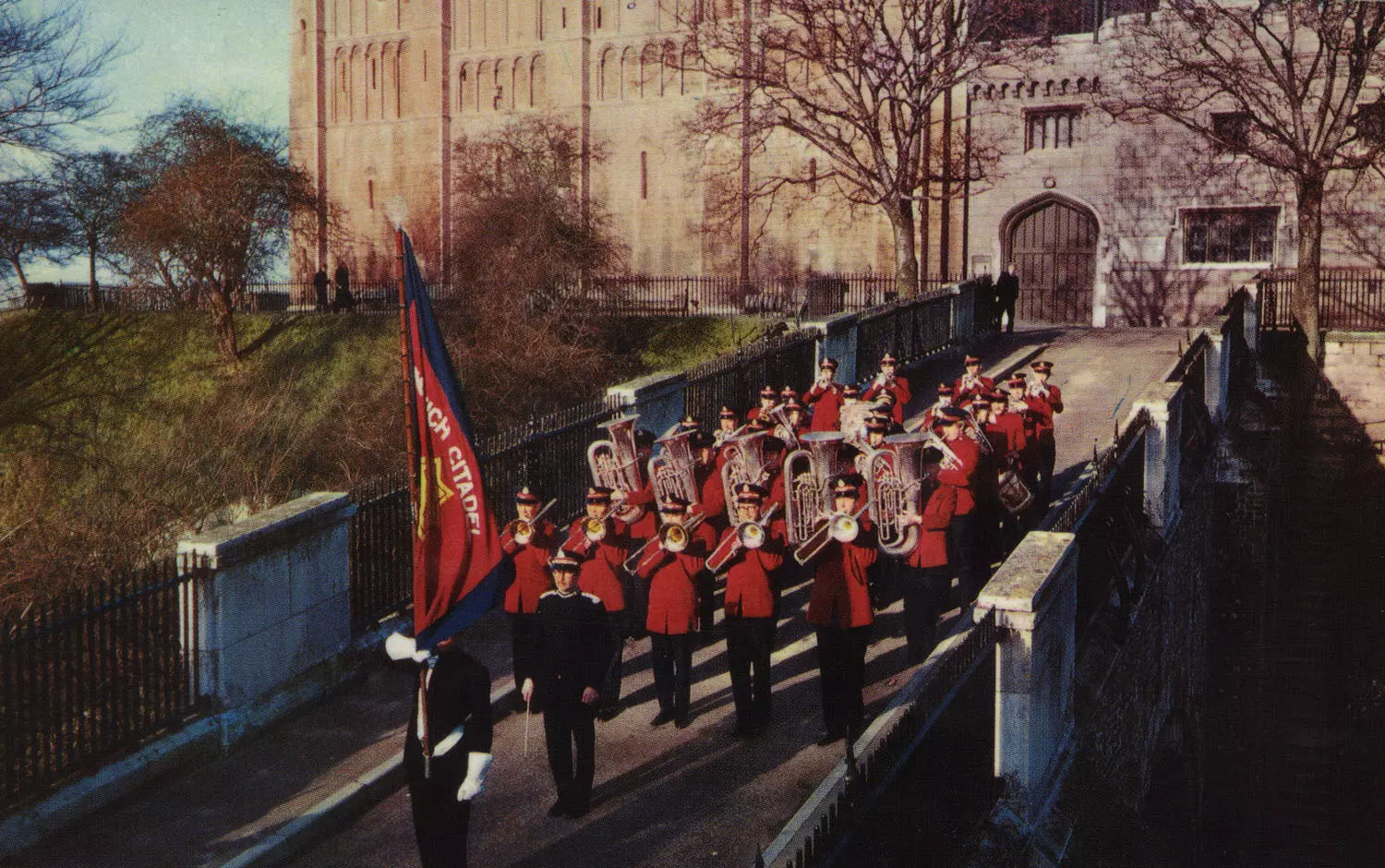
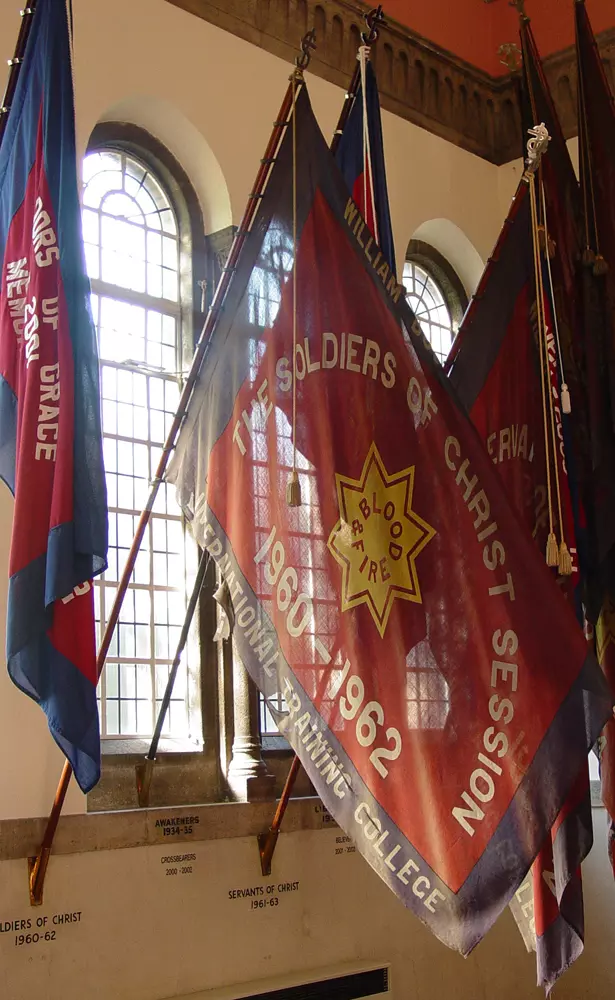
The crimson colour of the flag represents atonement, and the blue, God’s chosen emblem of purity. The motto ‘Blood and Fire’ stands for the blood of Christ and the fire of the Holy Spirit.
Shield
As well as having a crest, The Salvation Army also uses a shield symbol. Today the shield is The Salvation Army’s most highly recognisable logo, used across the world. The shield represents the ‘fight’ of life on a ‘spiritual battlefield’ and that God is a shield to protect and save us.
Metal shields were worn as badges by Salvationists from the early 1880s.
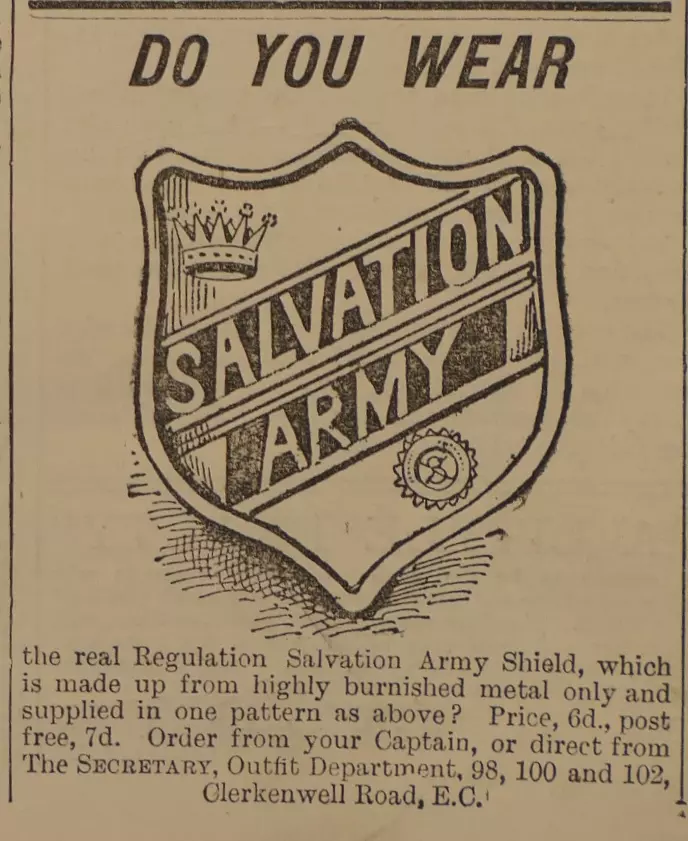
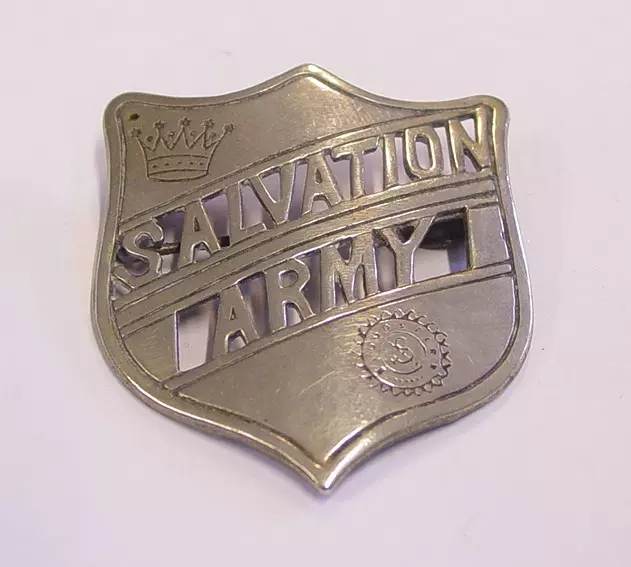

Uniform
By 1878, when the Christian Mission became The Salvation Army, military terms and symbols had become standard across the movement. Church halls were now ‘corps’ and flags, badges, brass bands and uniforms were all used - together with a rank system for officers (indicated by uniform trimmings).
The Salvation Army uniform did not become standardised until about 1880, when a navy blue serge uniform was introduced for both men and women. Men wore a high neck tunic with a stiff collar over a scarlet jersey. Their headgear was a cap with a red band. Women wore long navy skirts and high neck tunics with white lace-edge collars. They also wore bonnets, which had been introduced by Catherine Booth.
Due to economic necessity officers and soldiers have always had to purchase their own uniforms, and in 1890 a uniform would cost on average, three weeks' salary. Many Salvationists wore their uniforms on any occasion where formal clothes would be expected.
As Army work developed overseas, different uniforms were developed to adapt to local culture and climate. Variations included white, grey and beige uniforms – as well as sari uniforms with a Salvation Army sash.
The uniform, which has changed and developed greatly over the years, is still worn today by Salvation Army soldiers and officers.
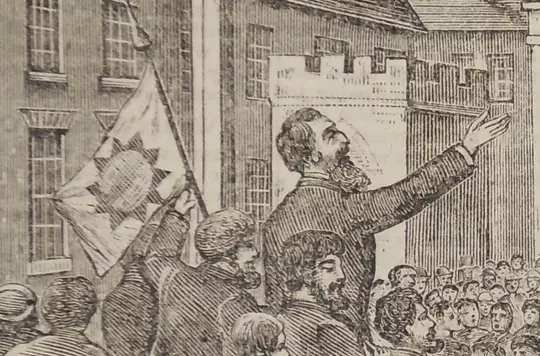
Virtual Heritage Centre
Visit our London museum virtually.

People
Find out more about The Salvation Army’s founders, leaders and early pioneers.
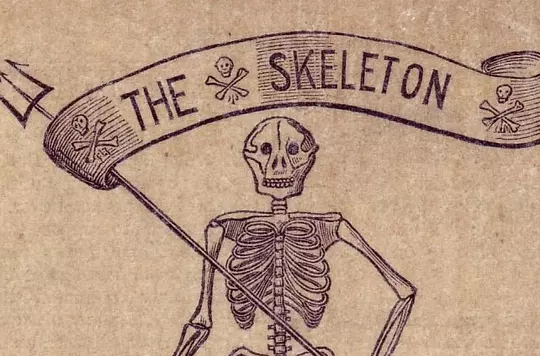
Opposition
Find out about opposition to The Salvation Army’s expansion in the Victorian era.
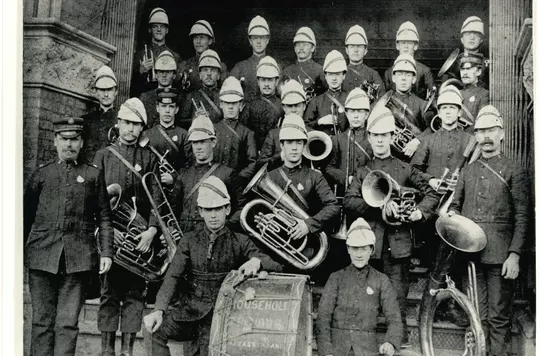
Music
Find out about the role that music and song plays within The Salvation Army.